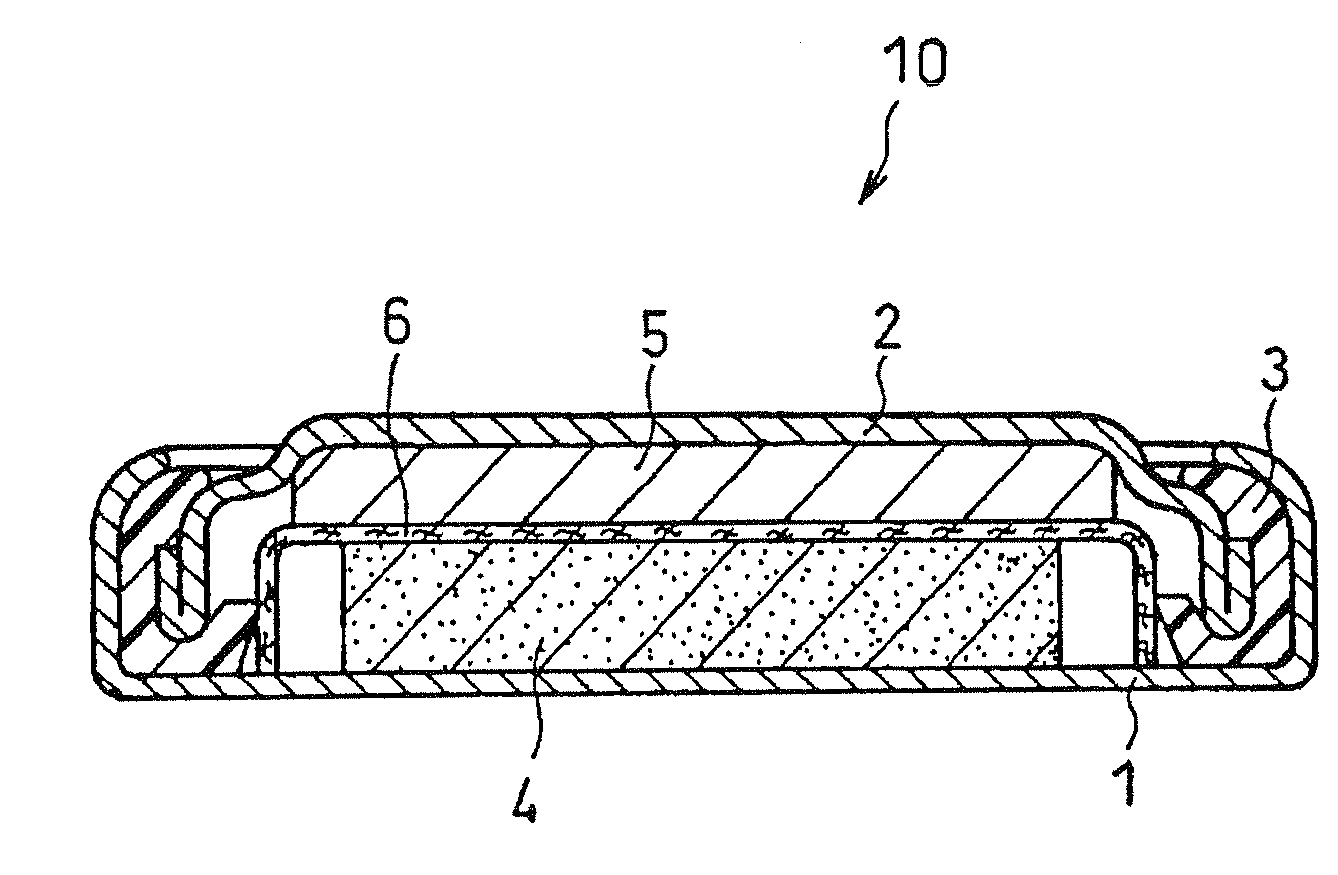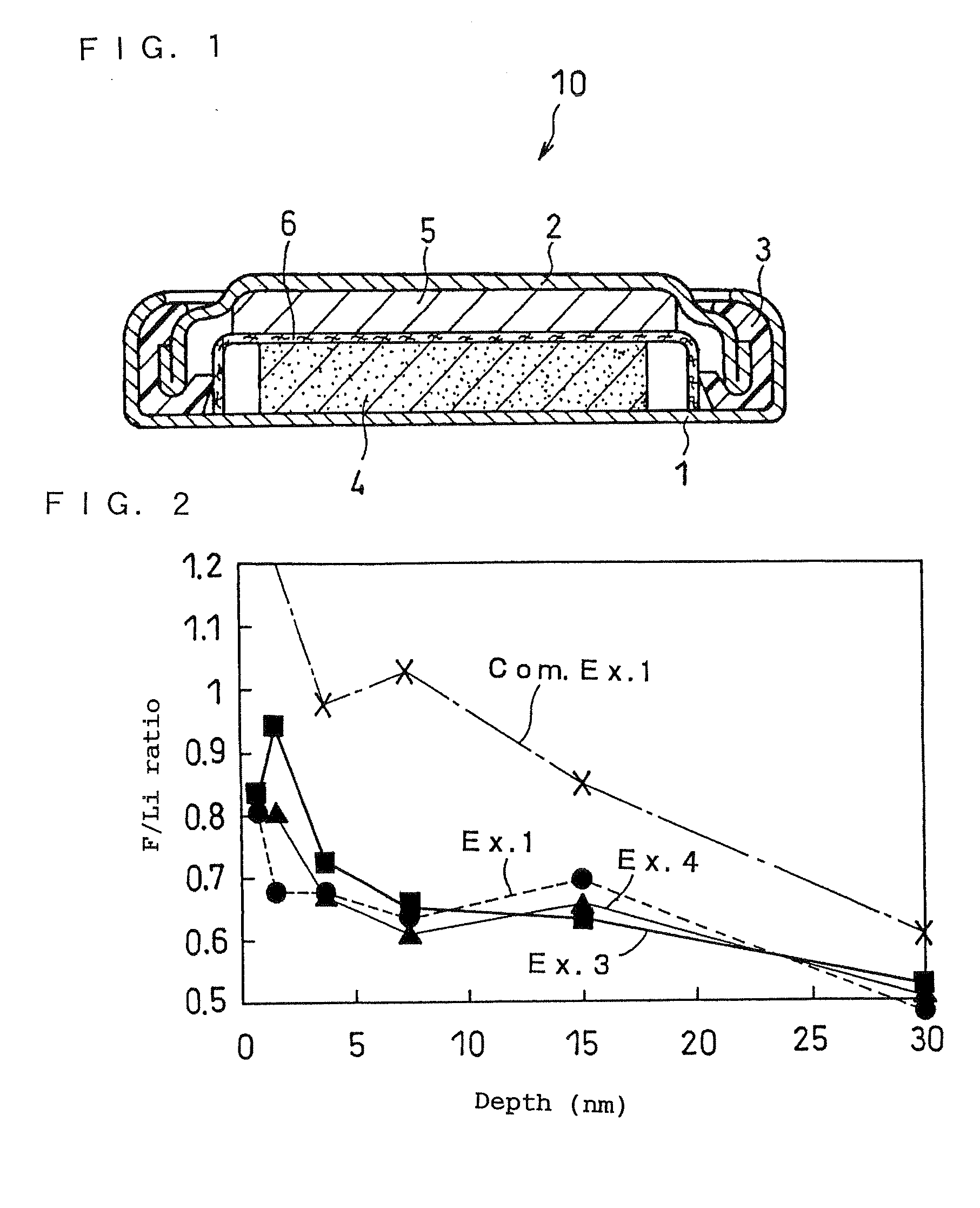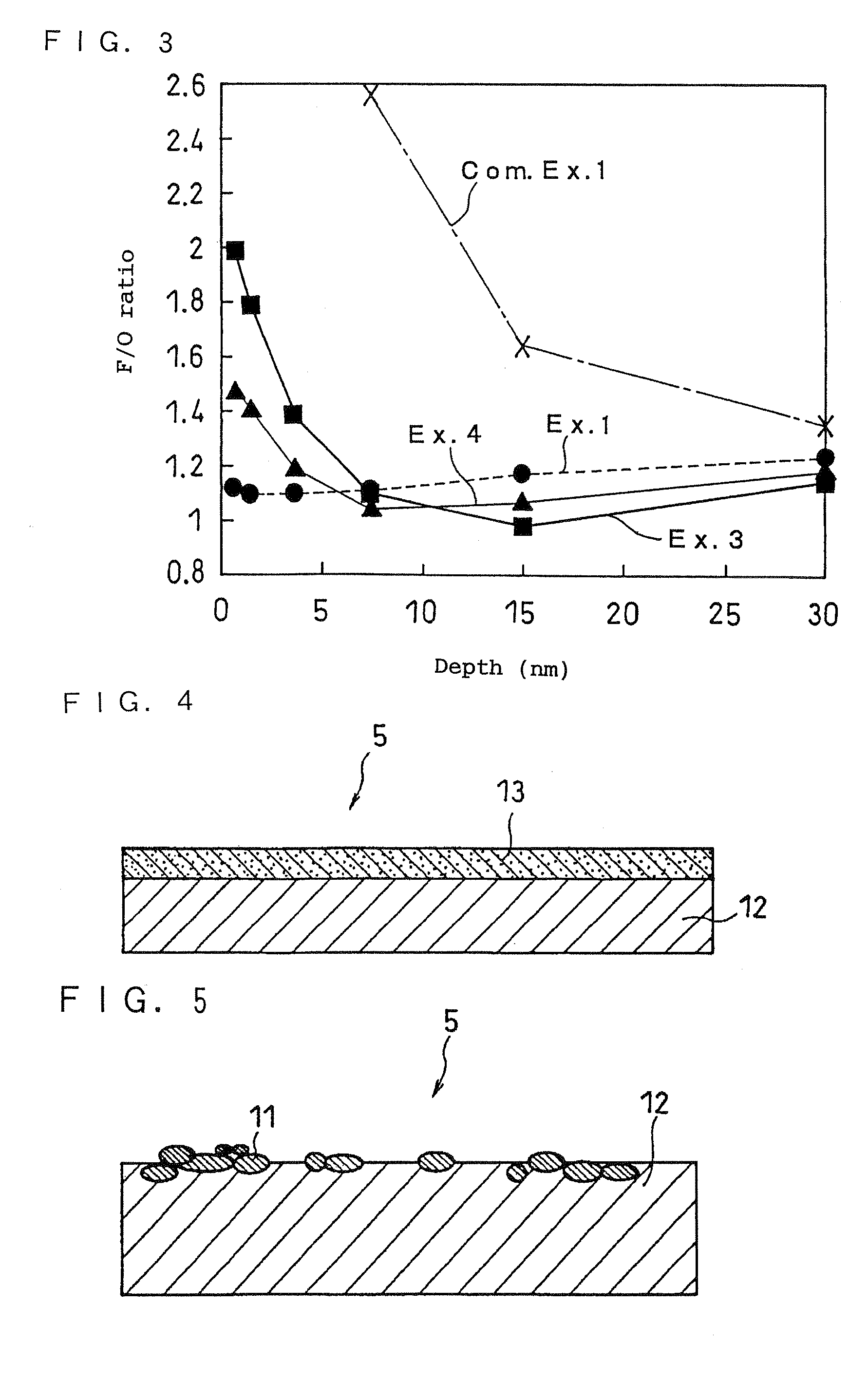Lithium Primary Battery and Manufacturing Method Therefor
a technology of primary battery and lithium battery, which is applied in the direction of non-aqueous electrolyte cells, cell components, electrochemical generators, etc., can solve the problems of notable decline in discharge performance and increase in internal resistance, and achieve the reduction of reaction overvoltage of negative electrodes, increase in battery internal resistance in the low temperature range, and improve large current discharge performance
- Summary
- Abstract
- Description
- Claims
- Application Information
AI Technical Summary
Benefits of technology
Problems solved by technology
Method used
Image
Examples
example 1a
(i) Preparation of Positive Electrode
[0112]For a positive electrode active material, petroleum coke was fluorinated and used as graphite fluoride. Graphite fluoride, acetylene black (conductive material), and styrene butadiene rubber (SBR)(binder) were blended in a solid content weight ratio of 100:15:6, and kneaded sufficiently by using a mixed solution of water and ethanol as a dispersion medium. After drying the obtained mixture at 100° C., by using a predetermined mold and a hydraulic press, the mixture was compression molded to give a disk-form, thereby obtaining a positive electrode.
(ii) Preparation of Negative Electrode
[0113]For a negative electrode active material, a lithium metal was used, and for an amorphous carbon material, acetylene black (AB) manufactured by Denki Kagaku Kogyo Kabushiki Kaisha was used. The average particle size of the primary particles of the acetylene black was 0.04 μm, and the BET specific surface area was 60 m2 / g. The acetylene black was dried at 1...
example 2a
[0117]A negative electrode was made in the same manner as Example 1A, except that the negative electrode preparation atmosphere was changed to an airtight container with a degree of vacuum of 100 Pa or less: 10 coin-type batteries were made.
example 3a
[0118]A negative electrode was made in the same manner as Example 1A, except that furnace black (FB) comprising primary particles with an average particle size of 0.1 μm and a BET specific surface area of 20 m2 / g was used instead of acetylene black; and the furnace black content in the composite of lithium metal and furnace black was set to 5 wt %: 12 coin-type batteries were made.
PUM
| Property | Measurement | Unit |
|---|---|---|
| particle size | aaaaa | aaaaa |
| BET specific surface area | aaaaa | aaaaa |
| pressure | aaaaa | aaaaa |
Abstract
Description
Claims
Application Information
 Login to View More
Login to View More - R&D
- Intellectual Property
- Life Sciences
- Materials
- Tech Scout
- Unparalleled Data Quality
- Higher Quality Content
- 60% Fewer Hallucinations
Browse by: Latest US Patents, China's latest patents, Technical Efficacy Thesaurus, Application Domain, Technology Topic, Popular Technical Reports.
© 2025 PatSnap. All rights reserved.Legal|Privacy policy|Modern Slavery Act Transparency Statement|Sitemap|About US| Contact US: help@patsnap.com



